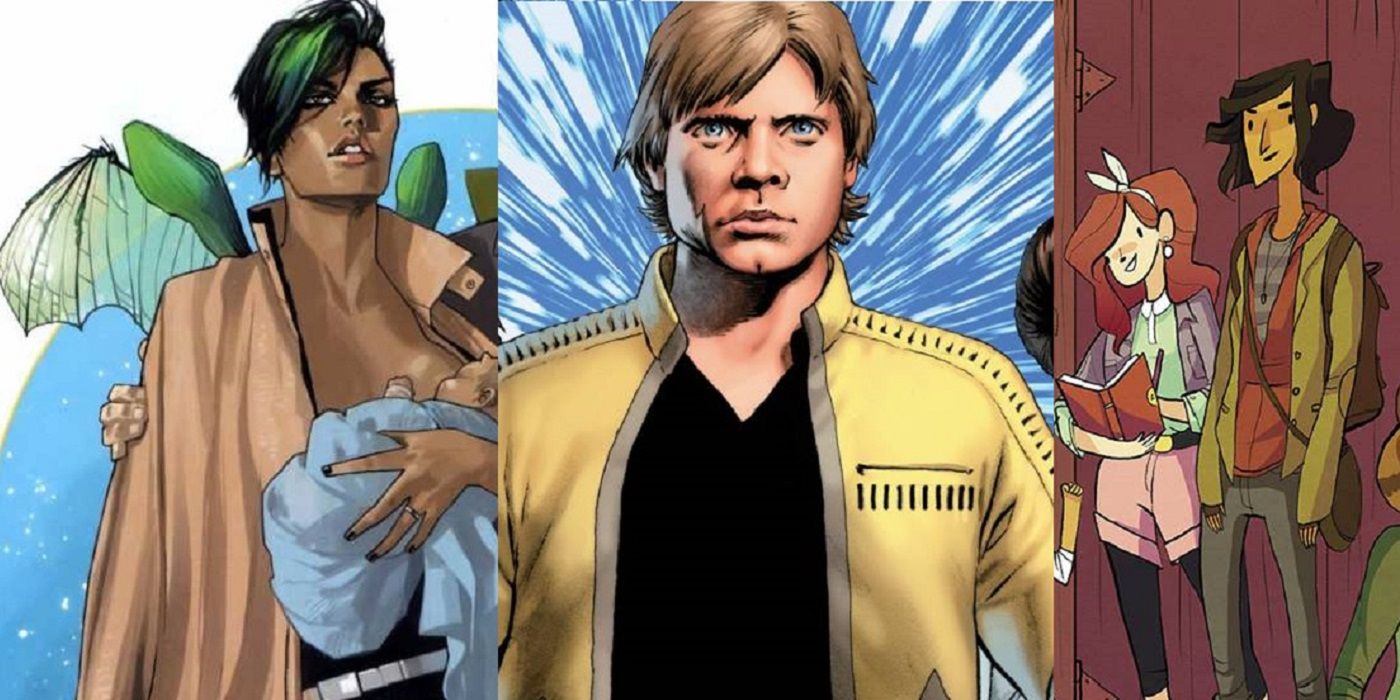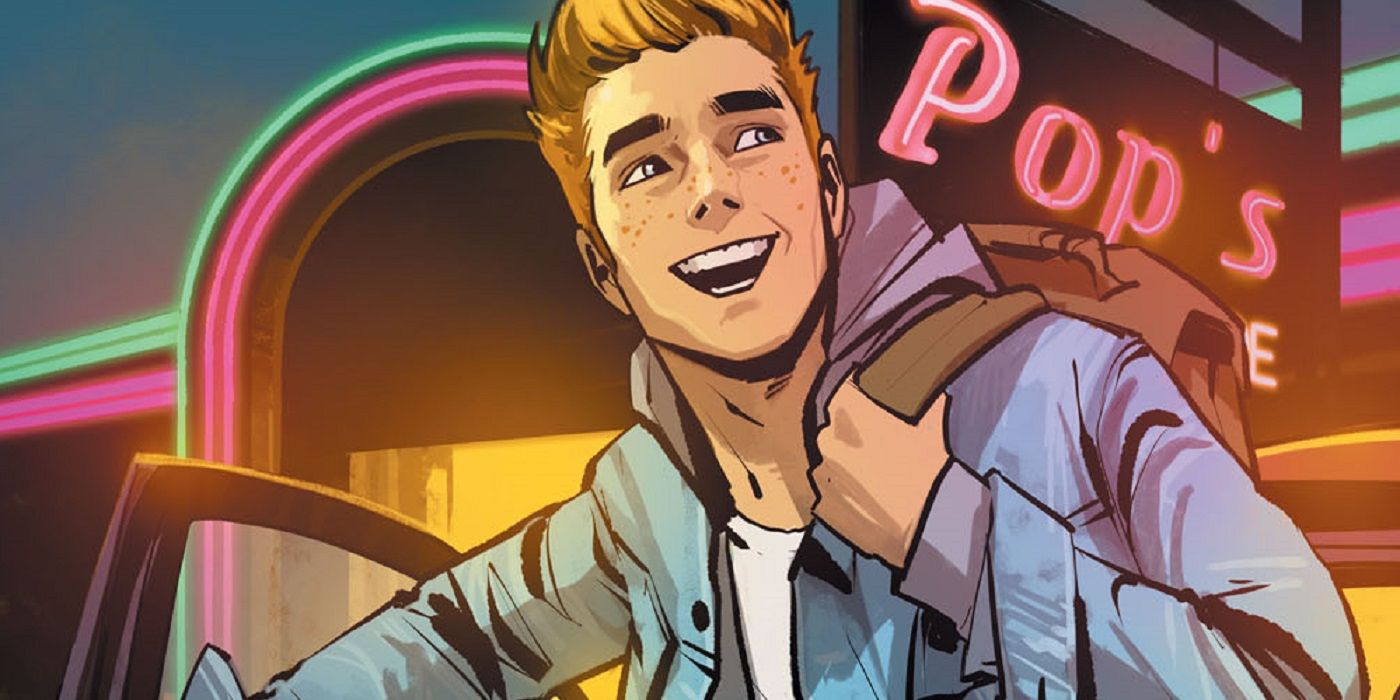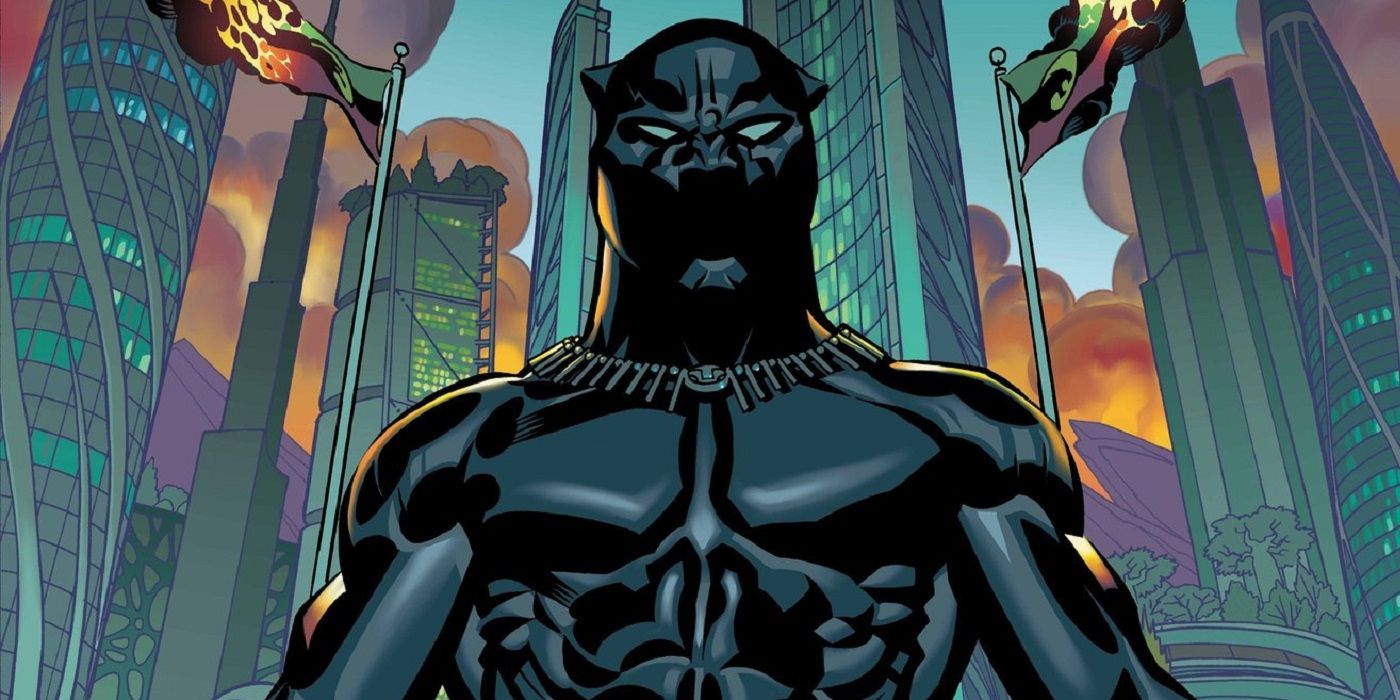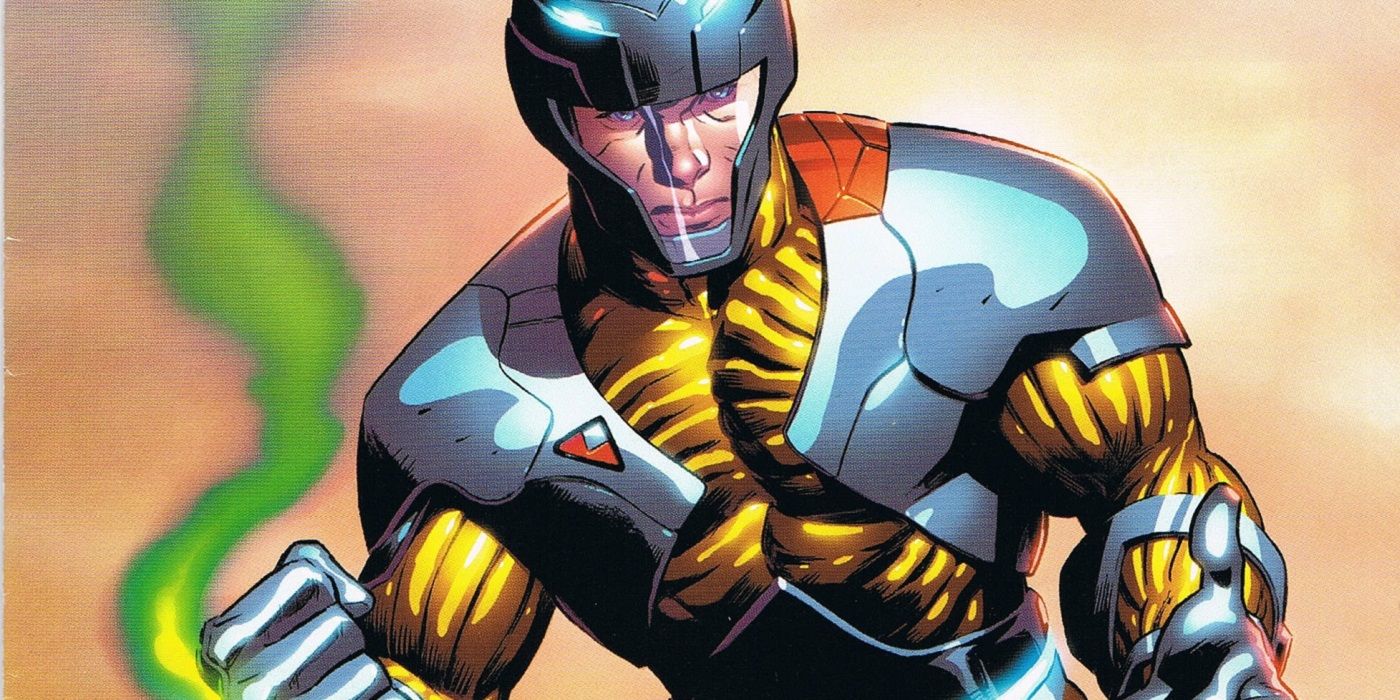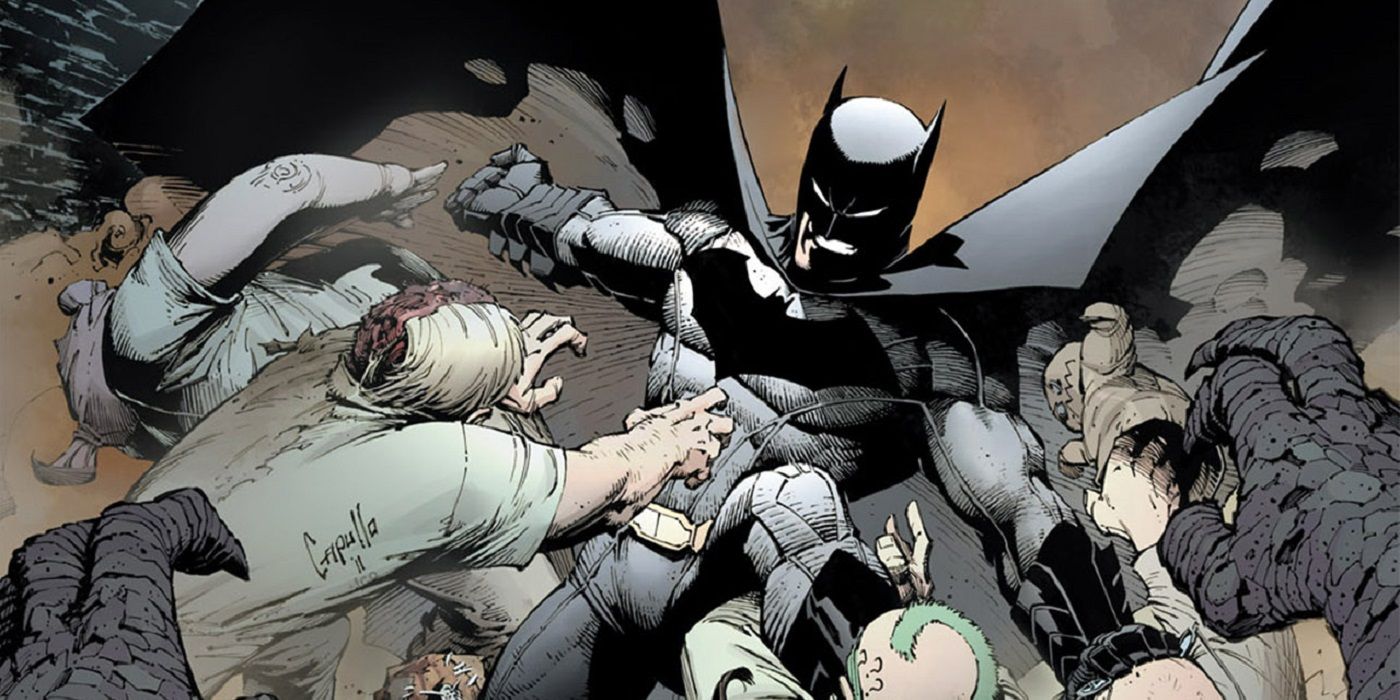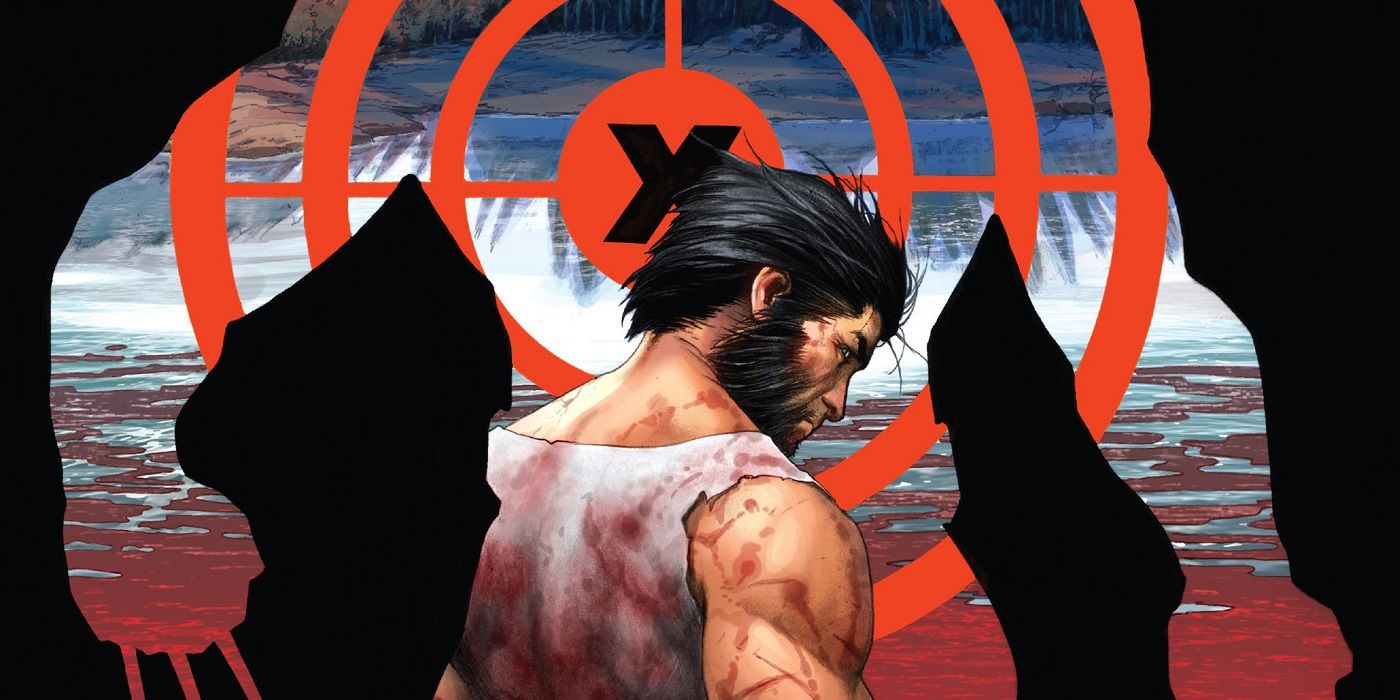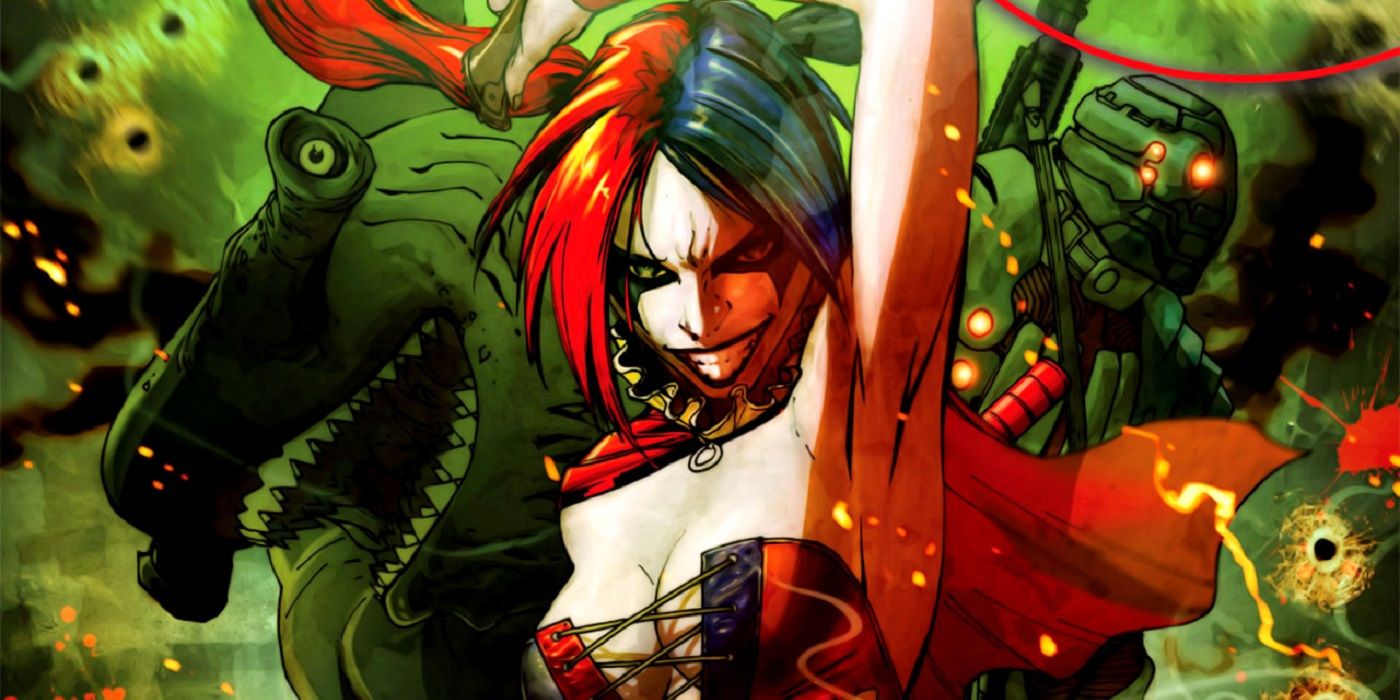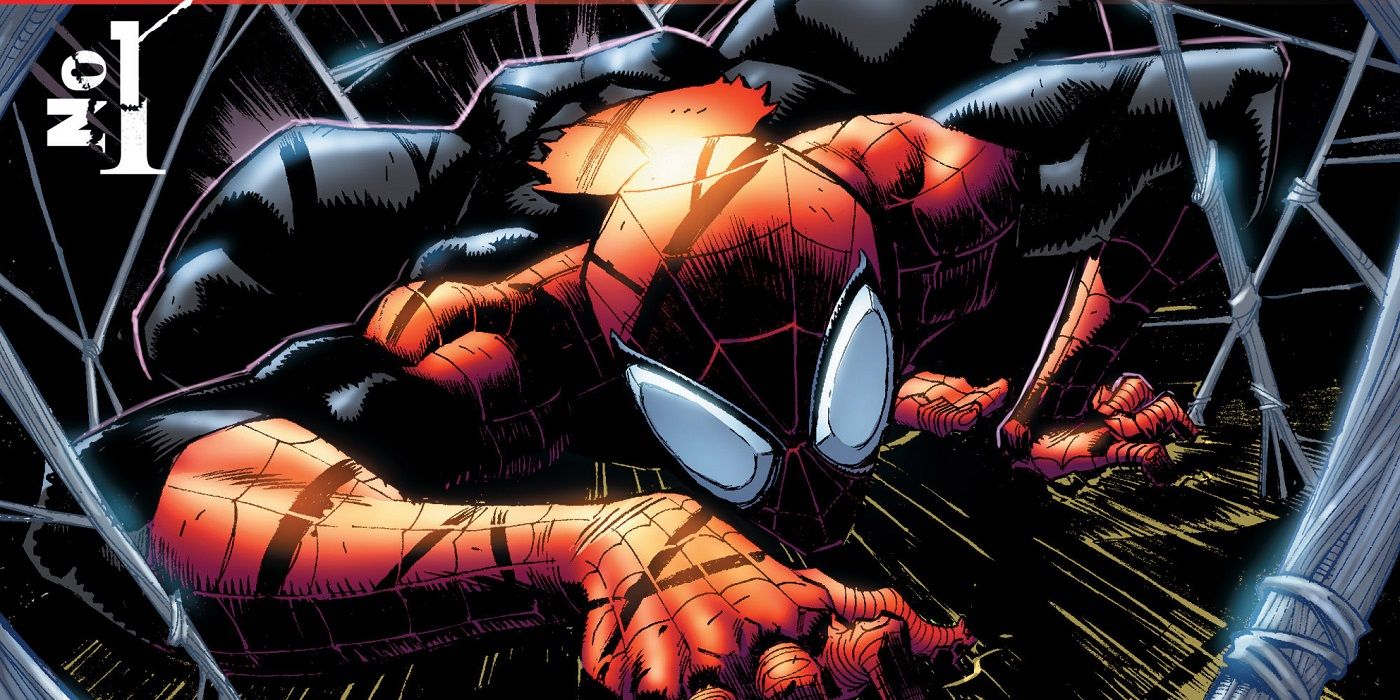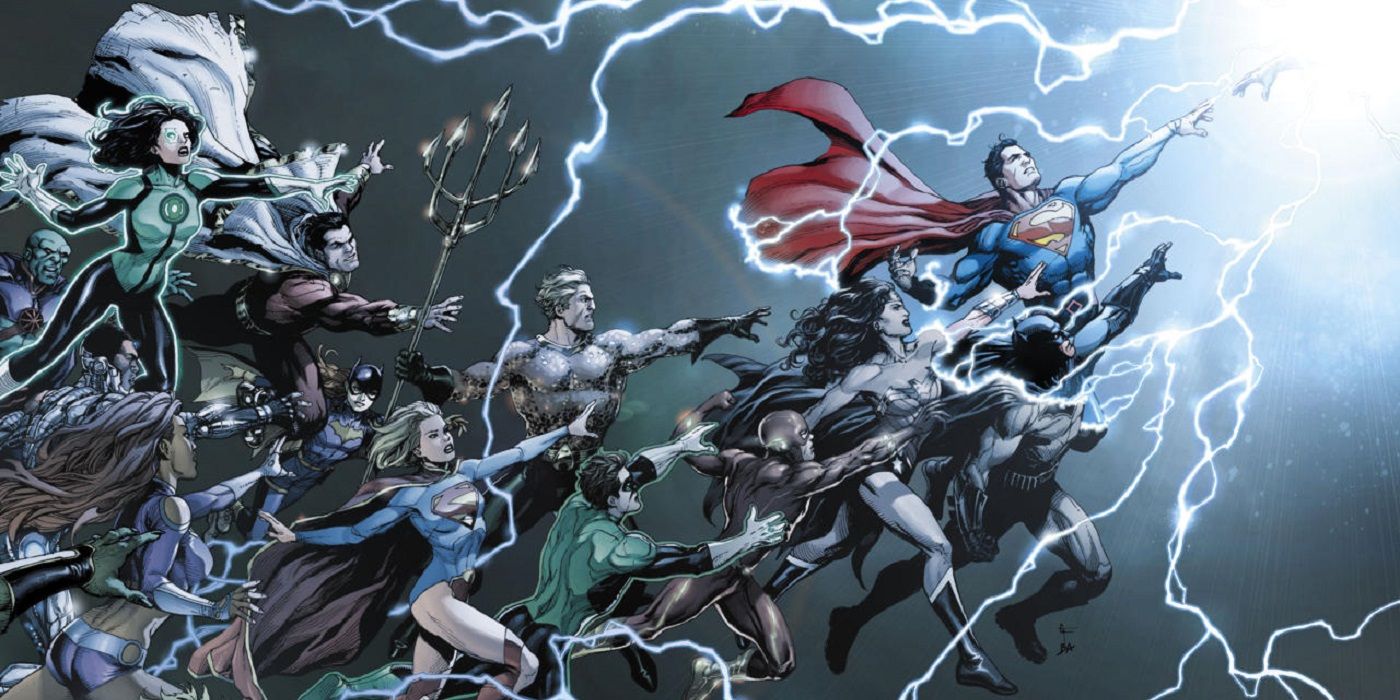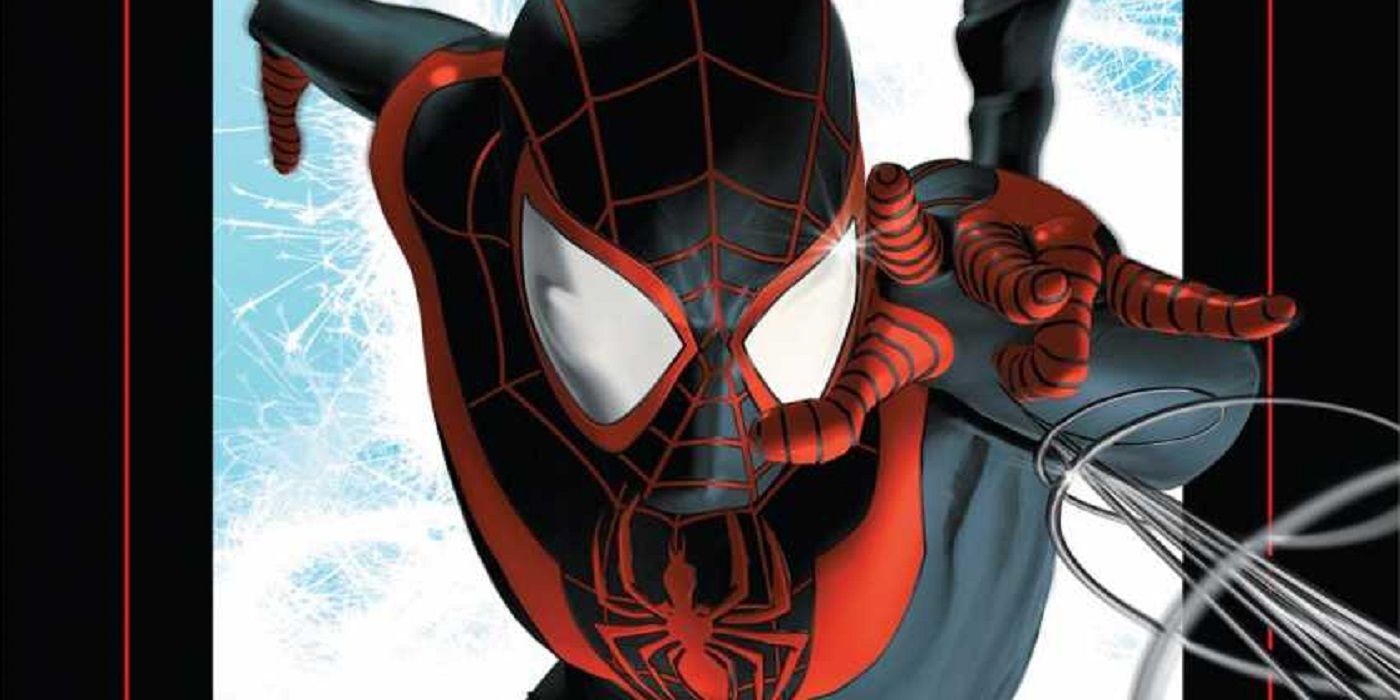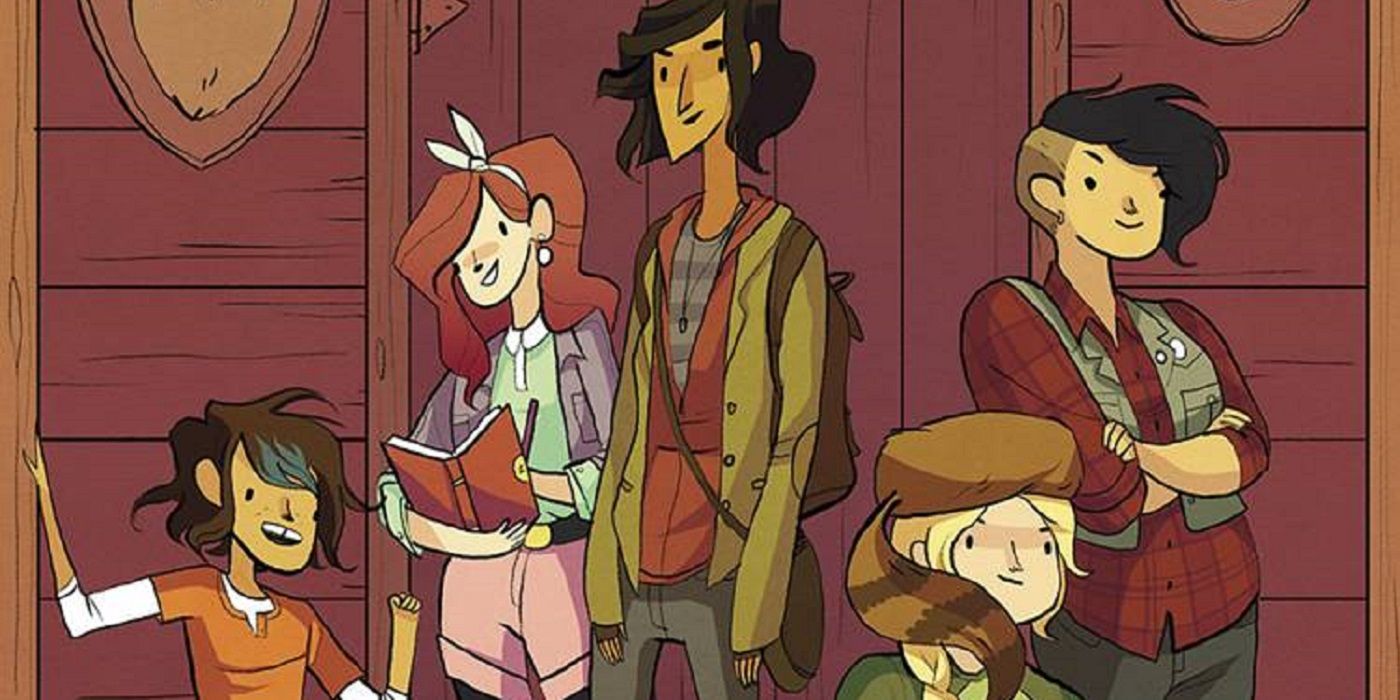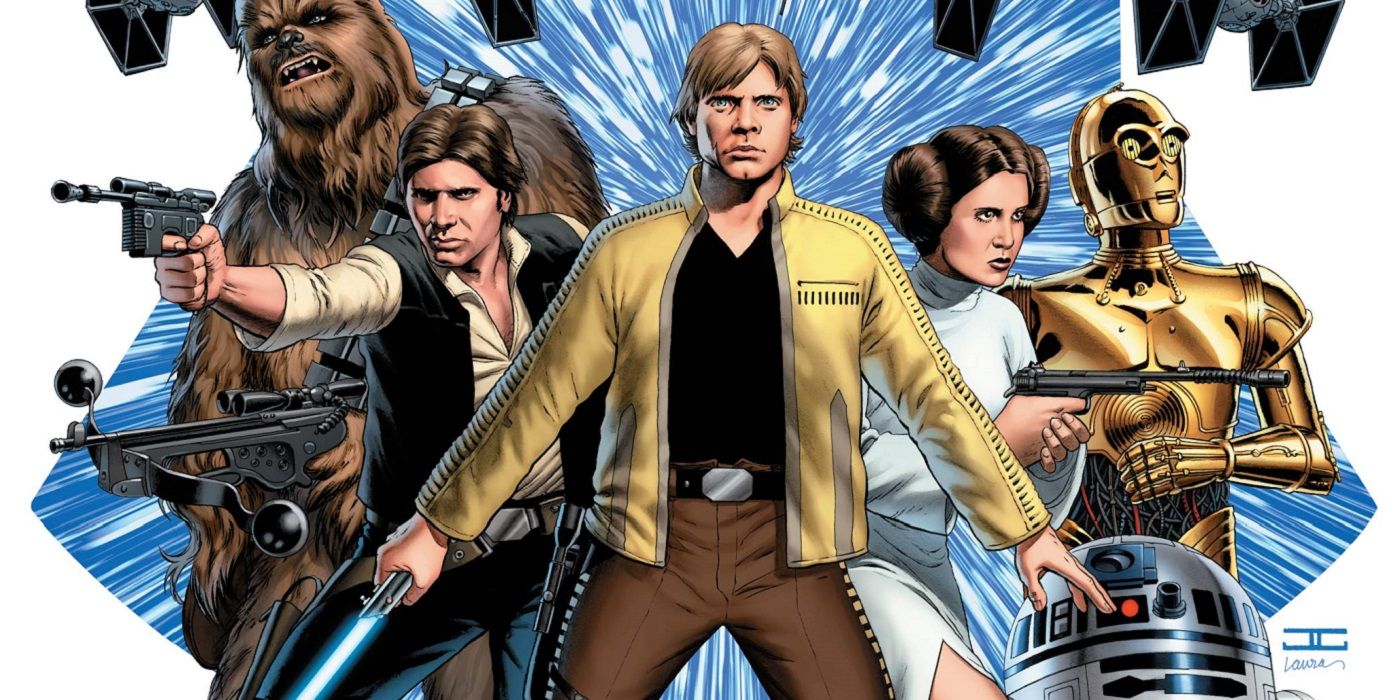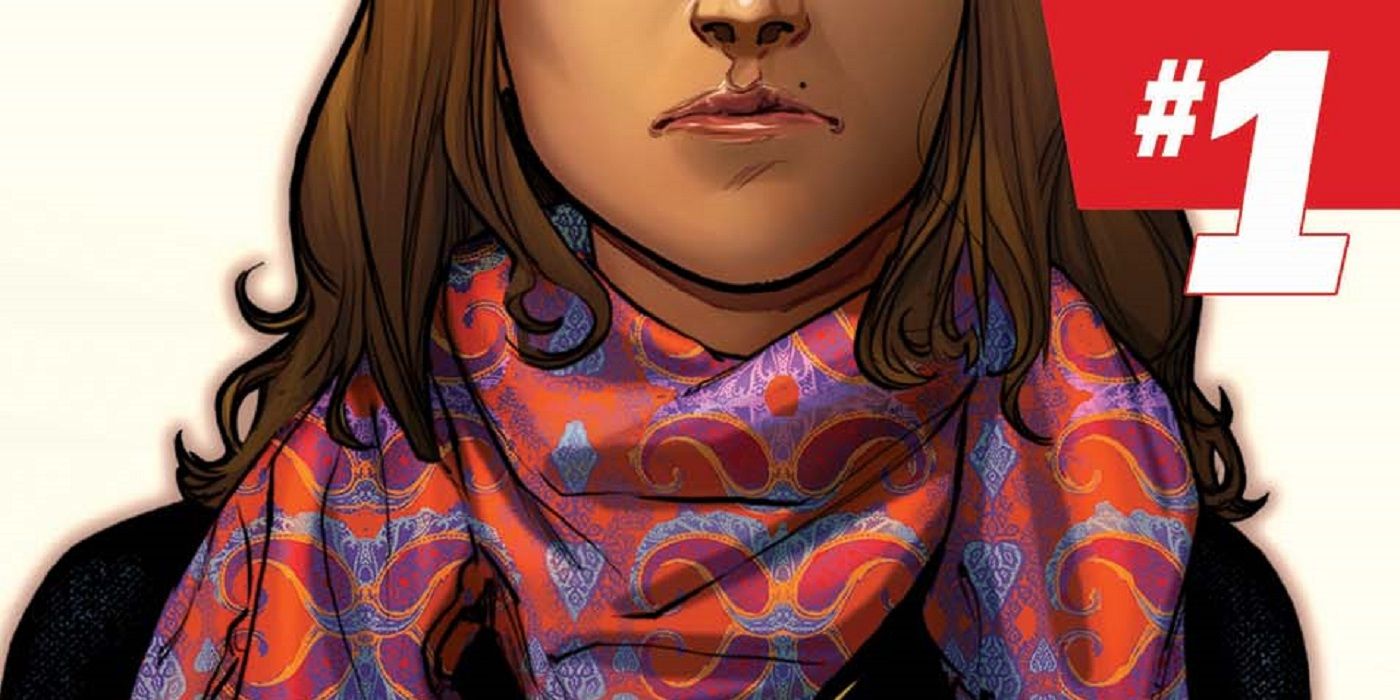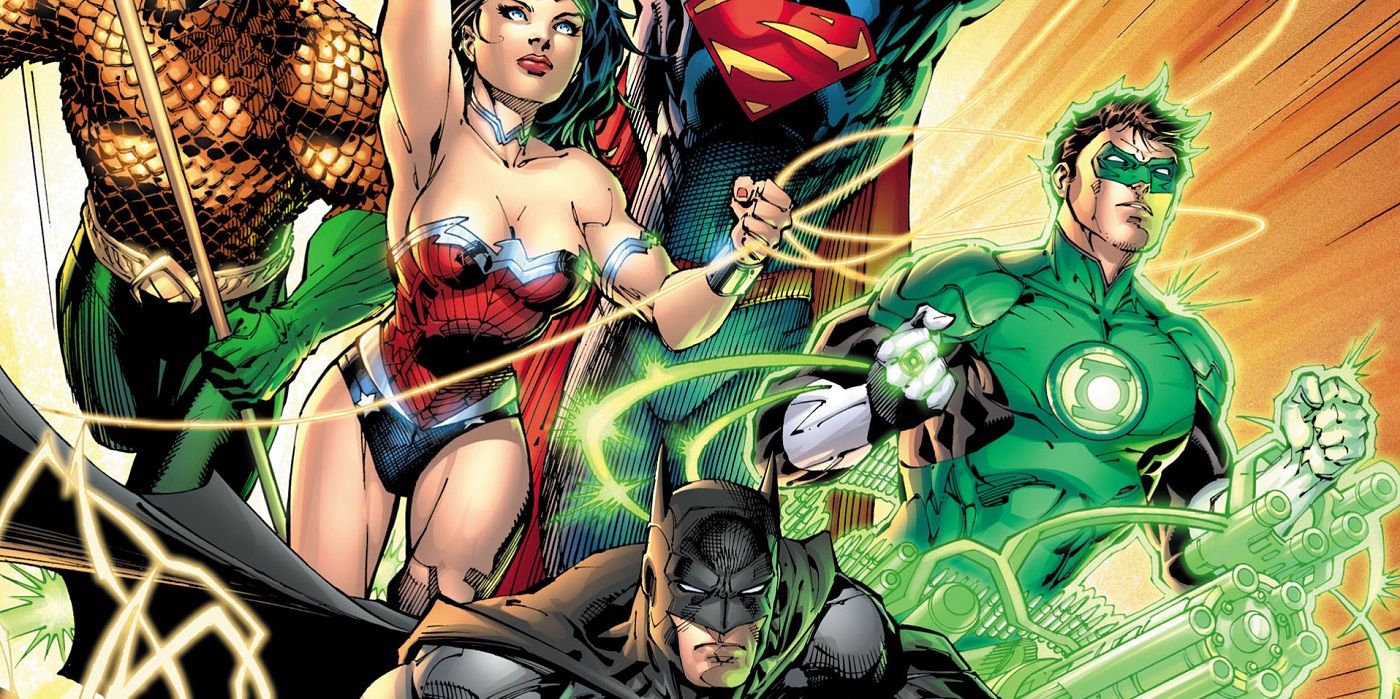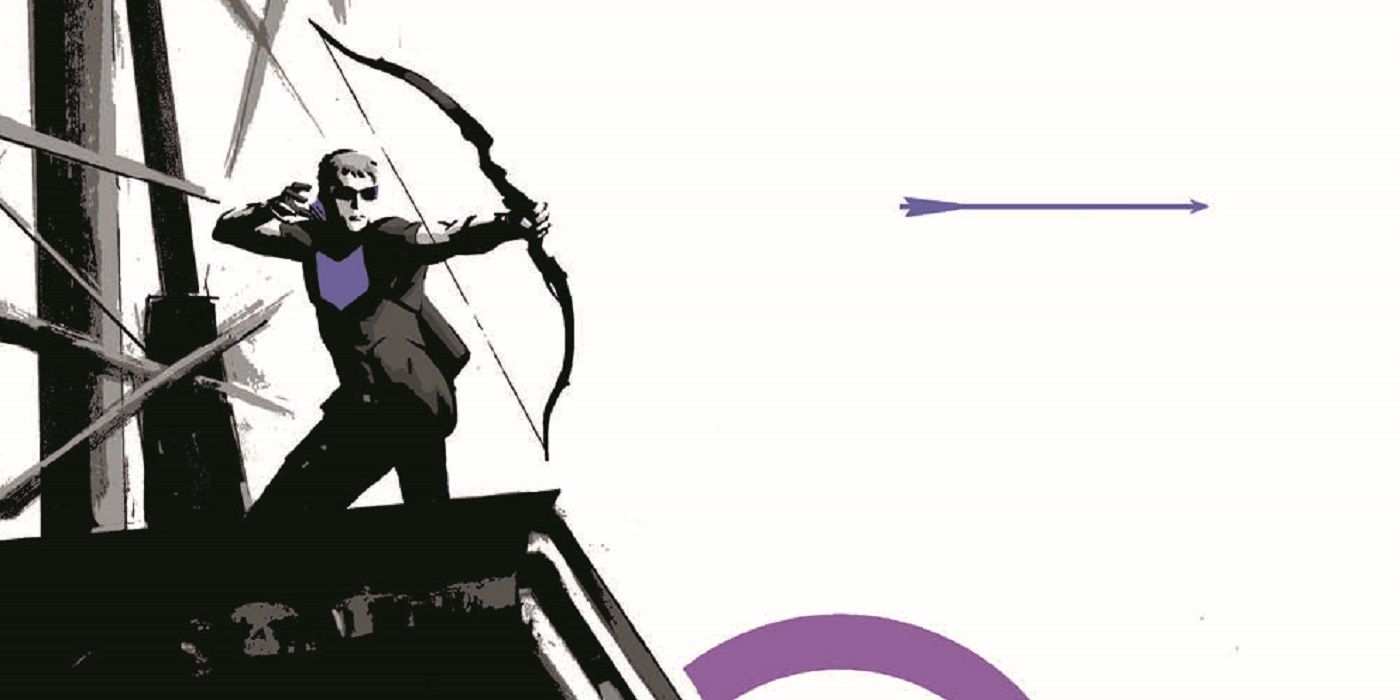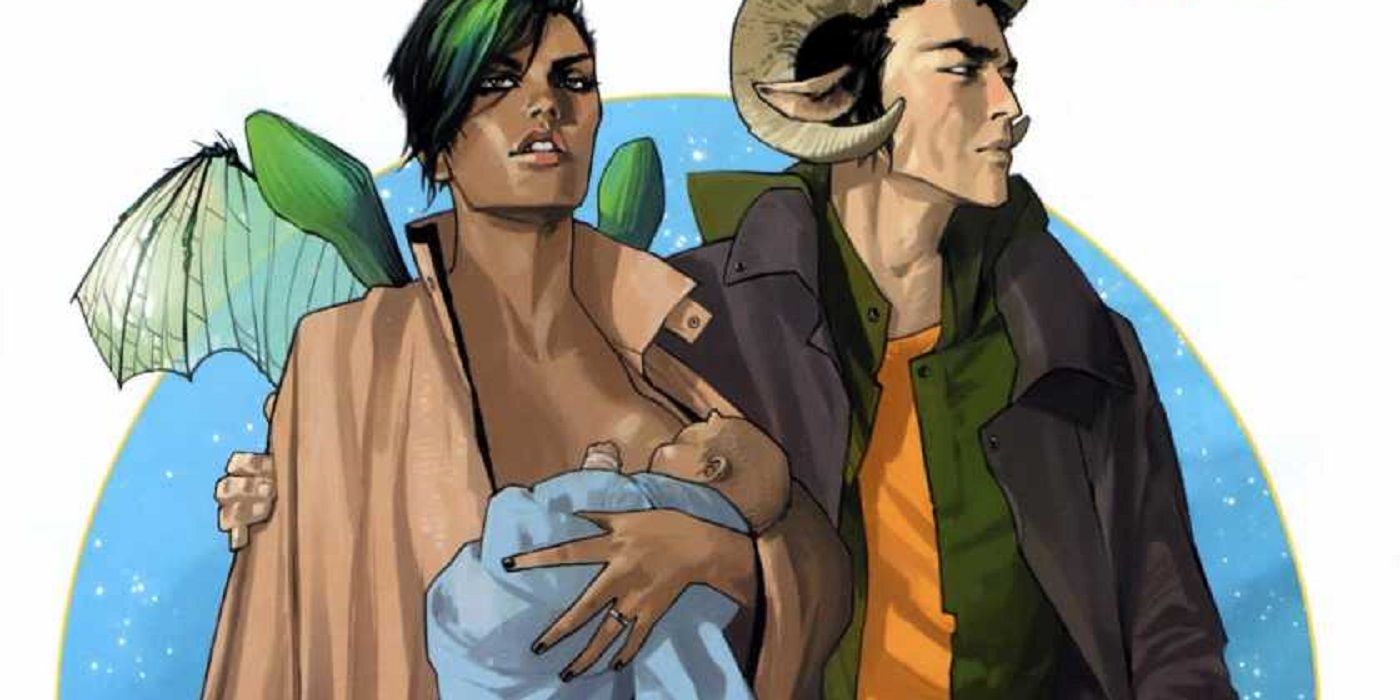Welcome to the beginning of a brand new feature where we look back at the most important comic book #1s of each decade. We're beginning with the current decade, which is obviously not completed yet, but we have seven years to choose from. For the purpose of these lists, we're going to start each decade with the year ending in zero, so the 1990s will be 1990-1999 and so on.
RELATED: 15 DC Comics Heroes Who Never Had A Solo Series – But Should!
We're doing it this way so we can give our best current picks for a decade which has, in particular, seen a lot of growth in the comic book industry, as well as some major new publishing initiatives, a few reboots and some notable new characters (while one very notable character died). We're just talking number one issues here, remember, so graphic novels aren't eligible for this list. Here, then, are the 15 most important #1 issues of this decade so far.
15 Archie #1
Archie Comics had already been going through a lot of changes since the introduction of 2013's "Afterlife With Archie," the publisher's first comic specifically targeted towards an older audience. That comic, and the installation of the writer of that series, Roberto Aguirre-Sacasa, as its Creative Director, showed that Archie was going to be trying new things. Things came to a head in 2015 when Archie Comics rebooted its entire Archie Comics universe for the first time, with star creators Mark Waid and Fiona Staples launching a new, more modern take on the teen hero and his pals and gals.
The success of the "Archie" reboot has led to similarly successful spin-offs featuring new takes on Jughead, Betty and Veronica, and Josie and the Pussycats by superstar creators. Of course, Archie is still putting out new stories in its classic style, as well. They just appear in dedicated digests, which are mostly reprints of older "Archie" stories.
14 Black Panther #1
Marvel Comics made national news when it announced that it had hired National Book Award-winning writer, Ta-Nehisi Coates, hot off of also winning a McCarthur "Genius Grant," to write a new "Black Panther" series. Hiring such a prominent writer was a big sign from Marvel that it were prepared to give Black Panther a higher degree of prominence ahead of his own film, which is coming in 2017.
Working with artist Brian Stelfreeze, Coates made it clear that he would be completely re-imagining Black Panther's whole world, specifically what he means to his nation of Wakanda, which has led to a recent spin-off series spotlighting the world of Wakanda. That series brought in author Roxanne Gay, the first African-American female writer to work for Marvel Comics (there is a back-up story co-written by Coates and poet Yona Harvey, the second African-American female writer to work for Marvel). "Black Panther" #1 changed things for both Black Panther and Marvel Comics, the degree of which continues to unfold.
13 X-O Manowar #1
Outside of Marvel and DC Comics, Valiant Comics was right up there among the most successful comic book companies of the early 1990s. Eventually, following a sale to video game giant Acclaim Entertainment, the company and its intellectual property went into limbo for years. In the end, childhood friends and entrepreneurs Dinesh Shamdasani and Jason Kothari bought the rights to the old property and established a new company, Valiant Entertainment, which launched in 2012 with "X-O Manowar" #1.
Written by Robert Vendetti with art by Cary Nord and Stefano Gaudiano, the comic was a re-imagining of the X-O Manowar character, showing how a Visigoth named Aric was captured along with his people by a group of aliens, who he would ultimately defeat using a mysterious suit of armor that they worshipped. The comic did not just re-launch X-O Manowar, however, it also served as a launching point for a brand-new shared comic book universe. Now, four years later, Valiant Entertainment continues to go strong. Very few companies have been able to restart themselves so successfully, and Valiant's rise has been nothing short of inspirational. And to think, it all began with this first issue!
12 Batman #1
Scott Snyder had already shown himself to be a force to be reckoned with with his run on "Detective Comics" with artists Jock and Francesco Francavilla, but when the New 52 happened, he was given the chance to step up even further and take on the flagship "Batman" title. Working with Snyder was artist Greg Capullo, who had become a superstar artist in the 1990s when he followed Todd McFarlane on "Spawn," but had only recently returned to regular comic book work for a little while before taking over art duties on "Batman." Capullo had previously been working on the Robert Kirkman/Todd McFarlane creation, Haunt, for Image in 2009.
Snyder and Capullo (who was initially inked by Jonathan Glapion on the series before Danny Miki became his inker) turned "Batman" into one of the highest-selling books in all of modern comics, as they introduced the mysterious villain organization known as the Court of Owls. Snyder and Capullo worked together on the book for over four years before finally drawing their run to a close with "Batman" #50.
11 Death of Wolverine #1
In the world of comic books, especially in the 21st Century, there is a certain lack of respect for superhero death. This is not surprising, of course, as once Superman "died" in 1992, it soon became an over-used gimmick to gain some temporary attention from the outside public. In 2014, Marvel decided to challenge those beliefs by actually killing off one of their most popular characters.
During Paul Cornell's run on "Wolverine," he had penned a plotline where Wolverine's famed healing factor had been disabled. Wolverine was now very much as vulnerable as any other person. This development culminated in the "Death of Wolverine," a four-issue miniseries written by Charles Soule with art from Steve McNiven and Jay Leisten. In it, as the name implies, the world's most famous mutant actually met his end. Wolverine's clone, X-23, has since taken over as the All-New, All-Different Wolverine and so far, two years after his death, Wolverine remains dead, which makes this series certainly stand out historically.
10 Suicide Squad #1
One of the most fascinating things about the great success that comic book movies have had in recent years is that more and more movies are looking to slightly less popular comic book series to find characters and concepts with untapped potential. One of these concepts is the Suicide Squad, a group of supervillains brought together by the government to work off their sentences on "suicide" missions (hence the name). Warner Bros. recently released the Squad in their own hit film.
While the concept of the Suicide Squad goes back to the 1980s (and other versions of the idea go back even further), the 2011 launch of the series was specifically the story used for the "Suicide Squad" film. The most important part of this particular take on the idea is that it was the first issue to add Harley Quinn to the series. Harley Quinn became the breakout star of the "Suicide Squad" film, but before then, she had already become a star of the New 52, and her first chance to breakout came in this issue.
9 Superior Spider-Man #1
In general, comic book fans tend to get overly upset about a whole lot of things. Very often, they will find themselves growing to enjoy the very thing that they were so upset about at the beginning. Michael Keaton as Batman is a good example of something that brought out tons of fan outrage... before those same fans ended up loving Keaton as Batman (and nobody else). That was the basic story of the Superior Spider-Man...
In late 2012, Marvel released a storyline by Dan Slott and Humberto Ramos where Doctor Octopus successfully switched bodies with Spider-Man. Peter Parker was now in Doctor Octopus' dying body and, as it turned out, he failed to reverse the switch before his new body gave out on him. So "Peter" was now dead and Doctor Octopus had successfully taken over Spider-Man's body. Luckily, though, before he "died," Peter inspired Doctor Octopus to use Spider-Man's body for good -- he was going to be an even better Spider-Man, a "Superior" Spider-Man, if you will. Thus launched the "Superior Spider-Man" comic book series, which ended up handling the concept so well, that a lot of the same people who thought it was an outrage (Slott received death threats!) ended up liking the series quite a lot.
8 DC Universe: Rebirth #1
When DC Comics rebooted its comic book universe in 2011 with the New 52, one of the problems its creators faced was that it, naturally, erased a good chunk of the history of the DC Universe. That's not just speaking about continuity, but more of a sense of history between the various characters. Longtime friends and/or lovers were now strangers in the New 52, as were old enemies. That left a lot for fans to discover, but none of the tried-and-true relationships that they had come to love.
With "DC Universe: Rebirth" #1, writer Geoff Johns attempted to change things by bringing back the original Wally West, who had not appeared in the New 52, and had him see what had become of the DC Universe. In the end, his uncle, Barry Allen, managed to pull Wally from what was essentially comic book limbo and into the New 52 world. In this landmark move, Johns was able to acknowledge the faults of the New 52 while setting up the DC Universe for a bunch of great new takes on its iconic characters (without doing a whole new reboot). The launch of DC Rebirth has been a great success, and it all came from this one comic book.
7 Ultimate Spider-Man #1
After capturing the attention of a confused world in 2011, when Marvel killed off Ultimate Peter Parker ("So Spider-Man's dead?" "Yes, but it is an alternate reality Spider-Man"), the publisher quickly followed up the major event by introducing a brand-new Spider-Man: a half-black/half-Hispanic teen named Miles Morales. The news was met with a great deal of controversy, but also an equal amount of interest.
So, when the comic by Brian Michael Bendis and Sara Pichelli came out (and it was excellent), it had a major impact not just on the career of Miles Morales, but on Marvel's new game plan where it came to diversity. Marvel now saw that a diverse hero was not only feasible, but could be a real success, so they began to go on the path of exploring that idea with other new heroes, including Sam Wilson becoming Captain America and Jane Foster becoming Thor.
6 Lumberjanes #1
Launched as part of Boom! Studios' "Boom! Box" imprint, "Lumberjanes" quickly proved why it was absolutely necessary in the comics world, as Boom!'s desire to try experimental approaches to books from new voices resulted in a smash-hit comic book series. Created by Boom! editor Shannon Watters, writers Grace Ellis and Noelle Stevenson and artist Brook Allen, "Lumberjanes" was a revelation that continues to garner huge sales and critical acclaim.
Starring a group of diverse girls, the Lumberjanes attend a summer camp where they are Lumberjane Scouts. While at camp, they find themselves running afoul of all sorts of monsters. The comic book is a delightfully adventurous series, and is backed by a whole lot of heart. It also has some of the best depictions of young LGBTQ characters in pretty much any medium, which is especially appreciated in such a great all-ages comic book series. It also proved that there was a market for outside-the-box, female-driven comic books.
5 Star Wars #1
The original "Star Wars" comic books in the late 1970s pretty much saved Marvel Comics from economic despair. They became a massive success and continued on for Marvel until 1986. Marvel then gave up the "Star Wars" license, which ultimately ended up at Dark Horse Comics, where it stayed for over 20 years. However, in 2012, The Walt Disney Company purchased Lucasfilm, owners of "Star Wars." A few years earlier, in 2009, Disney had purchased Marvel Comics. So now that "Star Wars" and Marvel were part of the same company, it was only a matter of time before there was a reunion.
It finally occurred in 2015, and the end result was a smash success, with Marvel's "Star Wars" line of books becoming a crossover sensation, as interest in "Star Wars" was riding high leading up to the blockbuster seventh "Star Wars" film, "The Force Awakens." Marvel was suddenly selling comic books to markets that they hadn't been successful with in years. That's how important it was to have the "Star Wars" license in their hands once again.
4 Ms. Marvel #1
As we noted before, Marvel had been exploring new and more diverse comic book concepts. In 2014, this new drive culminated in the launch of a new "Ms. Marvel" series. This time, the Ms. Marvel title was taken by a Muslim, Pakistani teenager living in Jersey City. The character was created by Marvel editors Sana Amanat,
Stephen Wacker, writer G. Willow Wilson and artist Adrian Alphona. The book was released amidst a flurry of controversy, which made the bods at Marvel believe that the new title would not be successful, sales-wise.
Remarkably enough (though not so to many), the book was a huge success, but how it was a success was the most interesting thing. "Ms. Marvel" was a major success with online sales, suggesting that there was a whole other market out there beyond brick and mortar comic book shops. Once again, it showed to Marvel that diverse voices were a big enough market upon which to capitalize, and that female characters could be major successes, as well.
3 Justice League #1
In 2011, DC Comics felt that its comic book line was in the doldrums, so the publisher came up with a striking idea: end the entire superhero line of comic books and then, in September 2011, reboot the DC Universe! This followed the events of the "Flashpoint" miniseries, wherein Barry Allen alters reality after going back in time to save his mother from being murdered. DC would go on to launch 52 new titles all at once, including the first "Detective Comics" and "Action Comics" #1s since the late 1930s!
The first comic released in this wildly ambitious endeavor was "Justice League" #1 where superstar creators Geoff Johns and Jim Lee (along with inker Scott Williams) showed the new origin for the world's most famous superhero team. The New 52 (which also involved DC releasing digital versions of its comics on the same day of its physical comic book releases, which was a big deal at the time) was a major sales success and changed DC Comics for good!
2 Hawkeye #1
It's still hard to believe that one of the most important books launched in the last decade is about the least famous member of the Avengers, but that's just what happened with "Hawkeye." Launched by Marvel in 2012 by creators Matt Fraction and David Aja, the comic itself is excellent, as Fraction brought in Kate Bishop, the Hawkeye of the "Young Avengers" (who Fraction had featured in a one-off issue of "Young Avengers Presents" four years earlier) and made her and Clint Barton partners. Meanwhile, Clint adjusted to life outside of his typical Avengers adventures. In his part within the art, Aja tried out experimental storytelling ideas that made the book stand out in a crowd of original titles at the time. If you were just judging the book on how good it was, "Hawkeye" holds up quite well, having won a number of awards.
However, its importance comes from how it showed Marvel that a different approach to telling comic book stories, even with relatively minor characters like Hawkeye, could be appreciated and could succeed commercially. Steve Wacker and Sana Amanat were the editors on the series, names you will recognize from "Ms. Marvel," as the success of "Hawkeye" led directly to the publisher being willing to try books like those starring underused or unheard-of characters.
1 Saga #1
Brian K. Vaughan had already launched a pair of critical and commercial successes for DC Comics in the early 2000s with "Y the Last Man" and "Ex Machina," but had taken a couple of years off after both series concluded (the final issue of "Ex Machina" came out in 2010). He returned to comic books in a big way, however, with his monster hit, "Saga," which he co-created with series artist, Fiona Staples.
"Saga," about a pair of literally star-crossed lovers caught in the middle of a galactic war, has become one of the most acclaimed comic book series of this generation, winning countless awards and becoming a massive sales success. The book's launch also coincided with a renaissance period for Image Comics. The company had its fair share of successful creator-owned series before "Saga" (including the blockbuster series "The Waling Dead" by Robert Kirkman), but following "Saga," all sorts of creators also launched major series at Image, including Matt Fraction's "Sex Criminals," Kelly Sue DeConnick's "Bitch Planet" and Marjorie Liu's "Monstress," to name just three.
What do you think is the most important #1 issue of this decade? Let us know in the comments!

